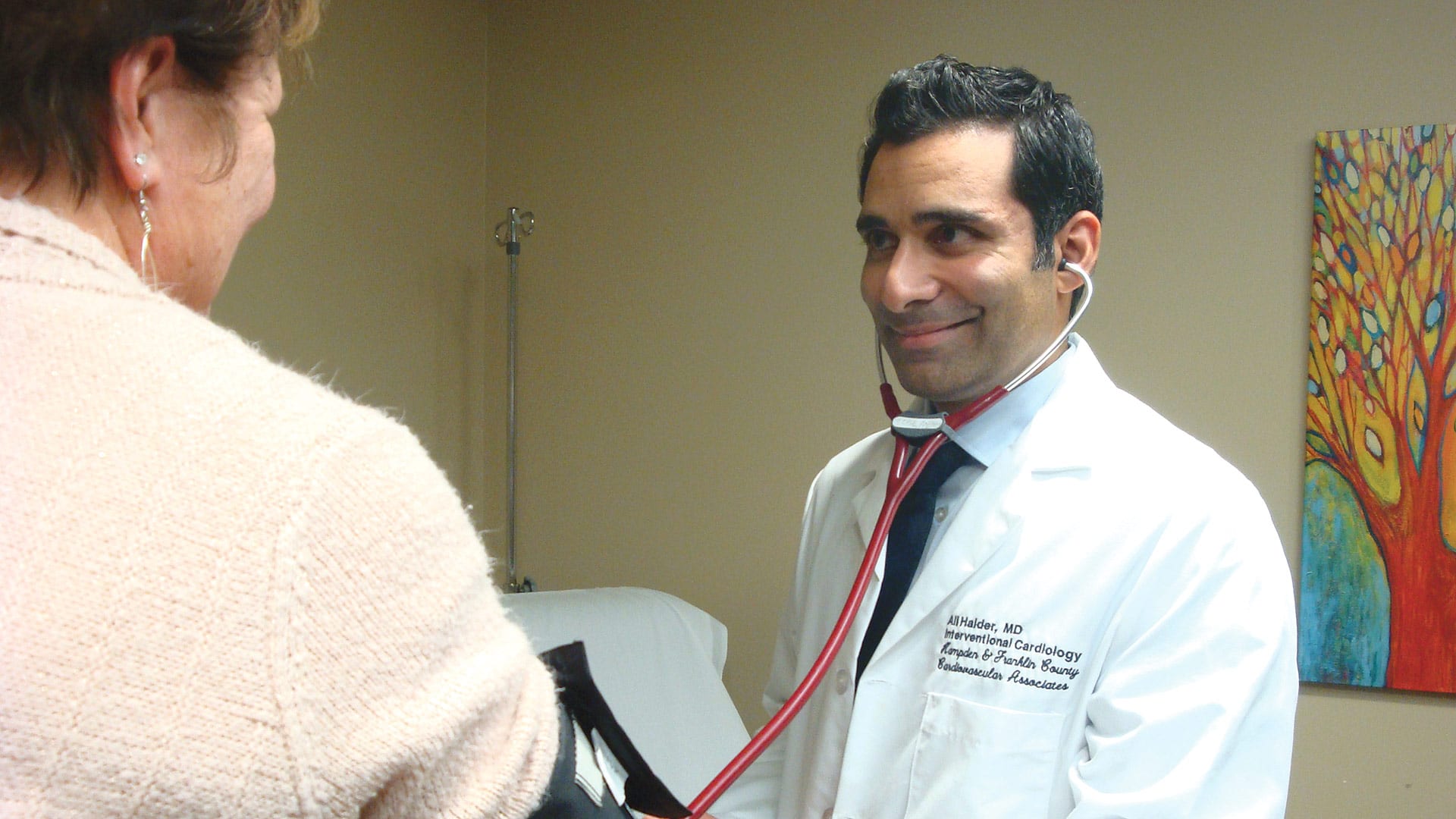The Benefits of Vitamin D Is Deficiency Casting a Cloud over Your Health?
Vitamin D and its role in women’s health has been a hot topic in both conventional and alternative medicine lately because vitamin D deficiency is widespread and seems to be related to so many health concerns: osteoporosis, depression, heart disease and stroke, cancer, diabetes, parathyroid problems, immune function — even weight loss.
Many of today’s conventional clinicians received little to no training in medical school for this problem. They may not be in the habit of testing for vitamin D deficiency or, if they are testing their patients, familiar with treatment. But practitioners from both sides of the aisle are seeing more cases of vitamin D deficiency and awareness is on the rise — one colleague reported that 85{06cf2b9696b159f874511d23dbc893eb1ac83014175ed30550cfff22781411e5} to 90{06cf2b9696b159f874511d23dbc893eb1ac83014175ed30550cfff22781411e5} of his patients don’t get enough D. And that’s consistent with what I see at my clinic.
How can this be happening? And what should you do about it for you and your family? The answer isn’t as simple as drinking more fortified milk.
What Does Vitamin D Do?
This essential nutrient is called a vitamin, but dietary vitamin D is actually a precursor hormone — the building block of a powerful steroid hormone in your body called calcitriol. It’s been known for many years that vitamin D is critical to the health of our bones and teeth, but deeper insight into D’s wider role in our health is quite new.
Vitamin D works in concert with other nutrients and hormones in your body to support healthy bone renewal — an ongoing process of mineralization and demineralization which, when awry, shows up as rickets in children and osteomalacia (‘soft bones’) or osteoporosis (‘porous bones’) in adults.
Researchers are discovering that D also promotes normal cell growth and differentiation throughout the body, working as a key factor in maintaining hormonal balance and a healthy immune system. It appears that calcitriol actually becomes part of the physical composition of cells, assisting in the buildup and breakdown of healthy tissue — in other words, regulating the processes that keep you well.
What’s more, evidence from studies tracking the prevalence of disease by geography and nationality shows clear links between vitamin D deficiency and obesity, insulin resistance, heart disease, certain cancers, and depression. Since most of these problems take many years to manifest, vitamin D deficiency has been overlooked by many providers for a very long time. I test all of my patients, and have been surprised to find that more than 85{06cf2b9696b159f874511d23dbc893eb1ac83014175ed30550cfff22781411e5} come up with a vitamin D deficiency.
Your body can’t create vitamin D on its own. Instead, it’s designed to make it through sun exposure. In theory, you can make an ample supply of vitamin D with as little as a couple of hours per week in the sun — provided the UVB rays are strong enough. You can also ingest D through food, especially fatty fish like wild–harvested salmon. Plus, lots of foods are fortified nowadays, so vitamin D deficiency should be an easy problem to solve, right? But the truth is, we’re just not getting enough, and so many of us aren’t even close.
These days, most commercial milk suppliers fortify their products with vitamin D. Some orange juice makers are doing the same, and like many food fads, you can soon expect to see lots of other products claiming to be good for you because they’re fortified with vitamin D. While the amount in these beverages is enough to ward off malnutrition, you’d have to drink gallons a day to reach optimal levels. That’s just too much milk or juice for most adults. And, while a tablespoon or two of cod liver oil a day is still a superb idea, many people won’t touch it — you could say it’s an acquired taste!
As we now know, sun exposure was critical for sufficient vitamin D to our ancestors. Until modern times, human beings spent a great deal of time outdoors. Our species was initially subtropical, meaning we naturally got enough sun to generate vitamin D.
But as Homo sapiens migrated to less temperate climes, this changed. Over many generations, the shift from a hunter-gatherer to an agrarian-based to an increasingly industrialized society also meant less and less time in the sun. Today many of us work inside sealed buildings with glazed windows, and we wear sunblock and drive everywhere in cars instead of walking outdoors.
Vitamin D and Cancer
Evidence is mounting that vitamin D may protect against some cancers, particularly breast cancer, prostate cancer, and colorectal cancers. In fact, more than 60 years of research have shown vitamin D supplementation or sunlight-induced vitamin D conversion to be associated with lower incidence of cancers.
There is also a higher incidence of breast cancer in northern climates, but whether that is associated with lower levels of vitamin D is still speculation. Vitamin D deficiency most certainly affects your immune system because calcitriol actually helps regulate cell division, so adequate levels may help sustain normal cell growth. And stress and other physiological markers can disrupt the function of vitamin D receptors, among others, making us more susceptible to unusual cell activity.
Vitamin D and Depression
Another area of vitamin D research is its relationship to depression. Seasonal affective disorder, or SAD, is a situational mood disorder brought on by decreasing daylight in the winter months. High doses of vitamin D during these months have proven to be a very effective natural remedy for SAD, leading most practitioners to believe that normal neurotransmitter function depends in part on adequate vitamin D synthesis.
Vitamin D levels are inversely related to those of melatonin, another mood-regulating hormone. Melatonin helps modulate your circadian rhythms, with darkness triggering melatonin secretion by the pineal gland within your brain, bringing you down gently at night for sleep. Insomnia, mood swings, and food cravings are influenced by melatonin. Sunlight shuts melatonin production off, while triggering release of vitamin D — that’s why doctors recommend getting outdoors as a remedy for jet lag.
Most of us can sense the positive influence of sunlight in our own lives by the immediate lift we get from taking a walk outdoors on a beautiful sunny day. Now, there may be many factors at work that brighten our mood in such cases, but sun exposure is almost certainly a critical piece.
Healthy Sunbathing: Is It Possible?
Our bodies are remarkably efficient. During the summer months, even as little as 15 minutes in the sun (without sunblock) in the early morning and late afternoon is enough for most light-skinned individuals to create an ample supply of vitamin D. Skin with more pigment (melanin) may require up to 40 minutes.
But some say we are trading our longer lifespan for an increased risk of skin cancers, so don’t throw away your sunblock. It’s still important to protect your skin, particularly on your face and scalp, during the sun’s peak hours (11 a.m. to 2 p.m.) by using a lotion with SPF-15 (or higher). Melanoma is a serious condition, and I’m not in favor of increasing your risk with unhealthy sun exposure.
This means taking care, not to be out in the sun unprotected for more than 15 minutes twice a day, in the early morning and late afternoon. If you begin to turn red before 15 minutes, cover up completely or go inside. It is never a healthy practice to burn your skin. It is also not safe to rely on tanning beds as a primary source of vitamin D, because their lamps are usually calibrated to favor UVA rays, not the UVB rays that stimulate vitamin D production.
Preventing Vitamin D Deficiency
Vitamin D deficiency may be a pervasive problem, but the best way to protect yourself from any deficiency is to build your health from the bottom up and let your body balance itself. We acknowledge the controversy over whether our primary source of vitamin D should be the sun, diet, or supplements.
Which combination is best for you depends on many variables, including your age, nutritional status, and geographic location. In a world where so many of us are at risk of vitamin D deficiency, we recognize each of these sources as valuable. With this in mind, we recommend the following steps to prevent vitamin D deficiency:
• Allow yourself limited, unprotected sun exposure in the early morning and late afternoon (no more than 15 minutes for light-skinned individuals, 40 minutes for darker skin) — particularly between May and September.
• Eat a diet rich in whole foods. Nutrient-dense, fatty fish like mackerel and sardines are good sources of vitamin D. Egg yolks, fortified organic milk and other dairy products, and some organ meats (like liver) are also reasonably good natural sources of D. Because vitamin D is still somewhat of a mystery, we’re not sure which co-factors are important for its absorption, but we can surmise they are most present in wholesome food.
• Take a top-quality multivitamin every day to fill in any nutritional gaps, preferably one that includes fish oil.
• Talk to your health care provider about adding a vitamin D supplement to your diet. If you don’t get out in the sun every day for 15 minutes, consider supplementing with 1000-2000 IU per day, at least during the winter months. This is so important for women of all ages — especially those over 50. Then be sure to get follow-up testing to check your response.
• And keep in mind that, in the end, optimal health is never about just one thing. Vitamin D is just one component of an ever-changing picture — your health is a work in progress that needs your consistent attention and support.
It may turn out that vitamin D is the key everyone’s been looking for, or more likely an important part of a far greater whole-health picture. But what matters most is what works for you. Investigate your personal vitamin D level with your medical practitioner as part of a comprehensive approach to your whole health. v
Marcelle Peck, an ob/gyn nurse practitioner, is co-founder of the Women to Women Clinic in Yarmouth, Maine.



Comments are closed.